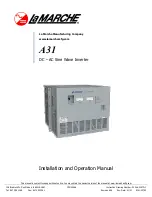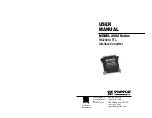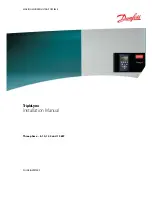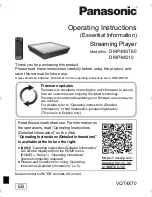
79
CHAPTER 7: Peripheral Pass-Thru Operation
7.1 Introduction
The Peripheral Pass-Thru mode of operation is useful in interfacing a serial device, such as a serial printer,
plotter, or instrument, to an IEEE controller. Data sent by the IEEE controller to the 488 Controller is
buffered and transmitted out its serial port. Data received from the serial device is buffered by the 488
Controller until read by the IEEE controller. The 488 Controller can buffer approximately 30,000 bytes
of data from both the IEEE input and the serial input.
The 488 Controller will refuse to accept more data from the IEEE controller when its buffer memory is full.
It does this by preventing completion of the bus handshaking sequences. It will also request that additional
serial data not be sent by negating its Request To Send (RTS) output or by transmitting the X-OFF ASCII
character. The serial handshake used depends on the handshake selection (refer to
Chapter 3
).
7.2 Serial and IEEE Input Buffers
Memory in the 488 Controller is dynamically allocated for the serial input and IEEE input buffers. This
allows for the most efficient partitioning of memory for any given application.
At power on, or device clear, each buffer is allocated a 127-byte mini-buffer or queue. When the serial input
[or IEEE input] requires more buffer space, additional queues are allocated. When a queue is empty, it is
released from the input buffers so that it may be re-allocated when, and where, required.
There are approximately 240 available queues for a total of 30,000 bytes of buffer (character) space. Queues
are continually allocated and released as required by the serial and IEEE input. Of the 240 available queues,
230 are issued without regard to controlling the receipt of additional serial or IEEE input data.
When the serial input buffer requests one of the last 10 queues (in other words, when there are 1270
character locations left), it signals the serial host that it should stop sending data. This is accomplished by
either unasserting RTS or issuing X-OFF, depending on which serial handshake control has been switch
selected. When more than 10 queues become available, it asserts RTS or issues X-ON.
The IEEE bus input signals that the IEEE input (or serial output) buffer is full when the number of queues
available drops below 10 (1280 character locations left). When the number of available queues drops to 4
or less (512 character locations left), the IEEE interface of the 488 Controller stops accepting data from the
bus. This bus hold-off will only occur until additional queues (more than 4) become available. At that time it
will resume accepting bus data.
7. Peripheral Pass-Thru Operation
















































